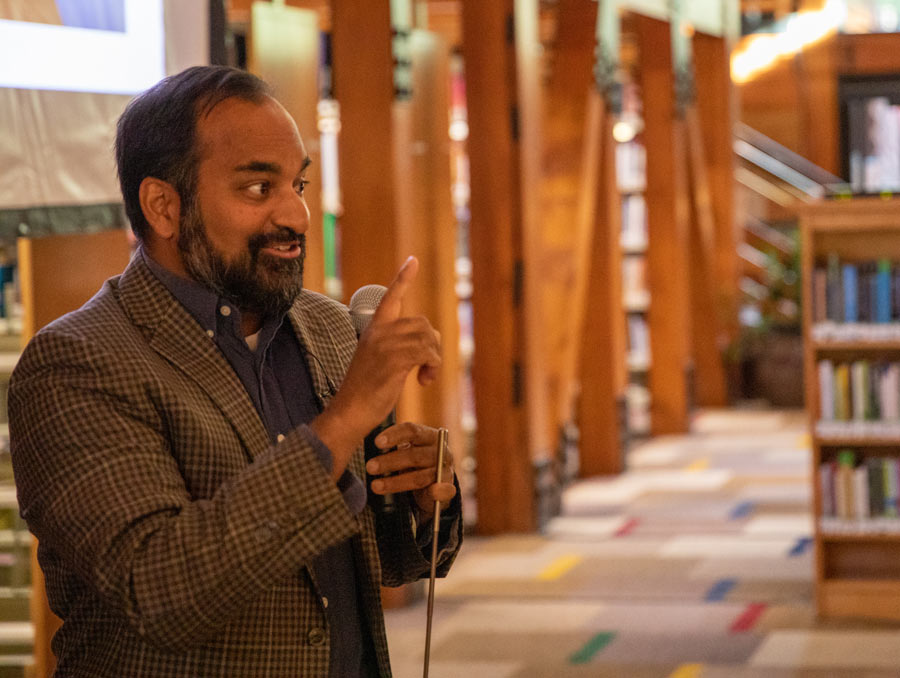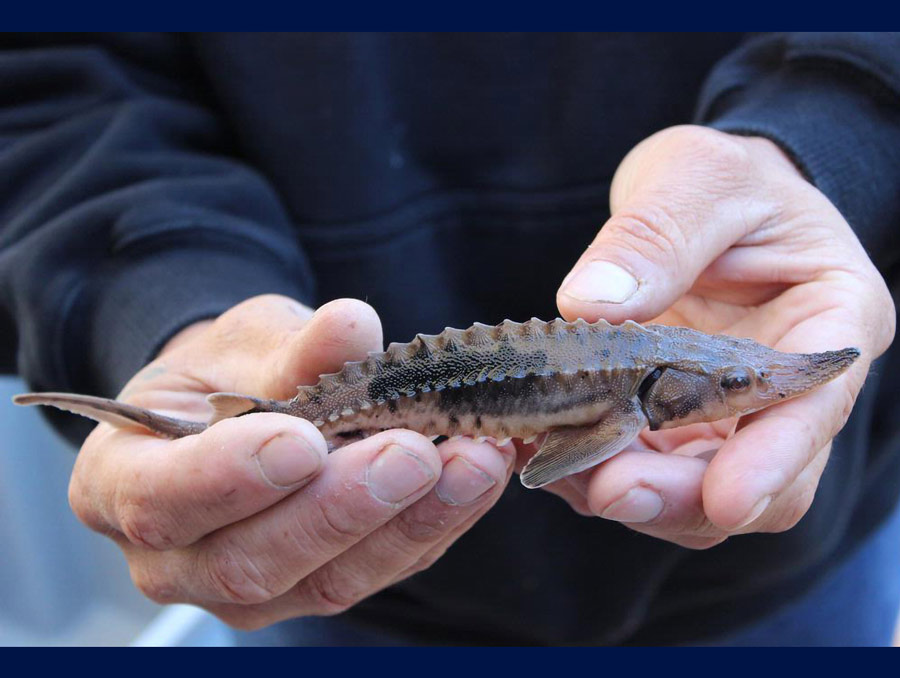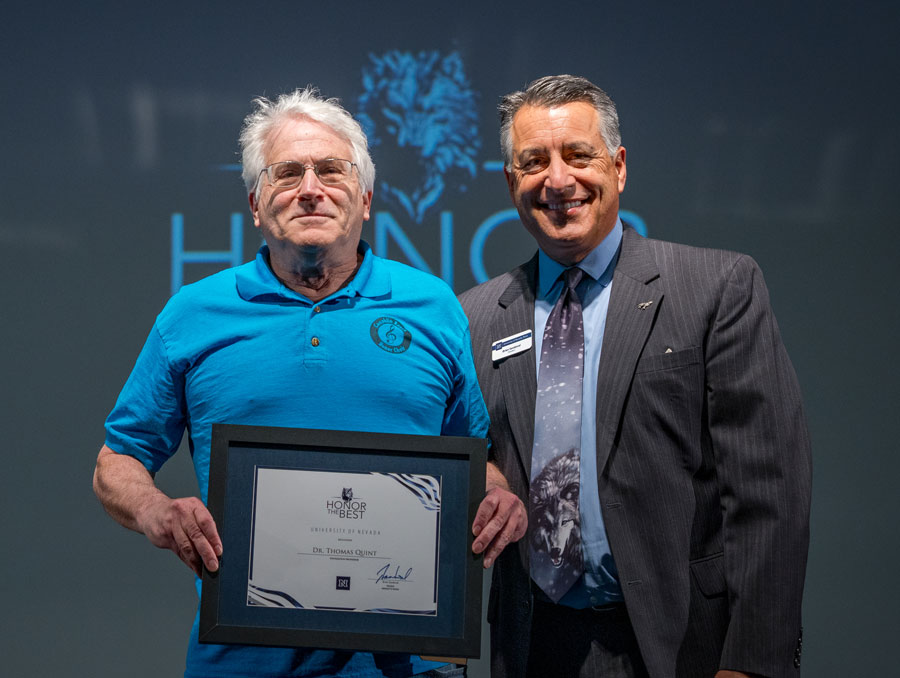This story was originally published in the 2024 edition of Discovery magazine, the College of Science's publication. This edition of Discovery celebrated the 20th anniversary of the College of Science.
"Today’s center is doing exactly what it should be doing," Sudeep Chandra said.
Chandra is talking about the Global Water Center (GWC), a multidisciplinary community of scientists on the University campus who are addressing challenging water conservation issues. The work extends far beyond water, to conservation of livelihood and culture.
The Global Water Center, led by Chandra, was established in 2016 with an approval from the Nevada System of Higher Education’s Board of Regents. Since its inception, the Global Water Center has done impactful research across the world.
History of the Global Water Center
In 2013, Chandra, Foundation Professor of biology at the University, served as a rotating National Science Foundation (NSF) program officer. The position allowed him to see how other universities structured interdisciplinary centers.
The idea for the Global Water Center had already been planted in Chandra’s mind for some time when faculty came together to scope out how the University might utilize its strengths and grow in a new direction. University leadership put out a call for projects to empower research on campus a few years prior to the faculty discussion, and Chandra worked with colleagues from the College of Agriculture, Biotechnology and Natural Resources (CABNR), the College of Science and the College of Engineering to draft a white paper about the need for a central hub where researchers study and solve water issues. After returning from his position at the NSF, Chandra moved to the Department of Biology in the College of Science. He remembers speaking with the College's then-dean, Jeff Thompson, who now serves as the University’s executive vice president and provost.
"It was a really important moment in my life," Chandra said.
Chandra shared the white paper that he and his colleagues had written.
"Dean Thompson said, 'That’s a great idea. So, what do you need?'" Chandra recalls.
Reflecting on successful programs he had seen while working with the NSF, Chandra asked for a physical space with conference meeting areas, whiteboards, videoconferencing technology (which was uncommon for the University at that time), stipends for early career faculty working through the center and support for research assistants. Chandra felt these were crucial tools for fostering innovation and interdisciplinary collaborations.
The University owned a house where the new William M. Pennington Engineering Building stands today, and where the Biodiversity Research Center had previously been located. That house became the site of the Global Water Center, and when the construction process began on the engineering building, the Global Water Center moved into a house across the street, which the center now calls home. The location has whiteboards, conference rooms and technology, just as Chandra envisioned (and importantly, a coffee and tea station where people can share and work through their ideas, fostering creative conversations).
Impactful projects
The Global Water Center has projects all over the world, but one that Chandra is particularly excited about is based in the northwestern corner of Nevada where the center is partnering with the Summit Lake Paiute Tribe.
The Tribe lives on the Summit Lake Indian Reservation in Humboldt County and is dedicated to protecting their resources, including the last self-sustaining lake population of Lahontan Cutthroat Trout (Nevada’s state fish), a listed species by the federal government.
Working closely with Tribal scientists like James Simmons, a student in the University’s interdisciplinary Ecology, Evolution and Conservation Biology Graduate Program, Chandra and his colleagues are developing a complete understanding of Summit Lake’s watershed, as the region warms due to climate change. This entails looking at changes in vegetation; monitoring how the water running into the lake triggers the fish to spawn; examining past climatic history using tree cores and lake cores (work done by Adam Csank in the geography department and Paula Noble in the geological sciences and engineering department, respectively) to understand how fish populations changed during warmer periods; observing fish ecology in the lake; estimating current fish populations and using that information to effectively support the population with the Tribe’s fishery and more. The University’s resident big fish expert, Zeb Hogan, has also been involved in this project. Together, the researchers are partnering with CABNR faculty Erin Hanan and Adrian Harpold to understand the current and future climate in the region and watershed.
"The outcomes of the research and collaborations so far are quite strong," Chandra said. "We have a stronger partnership with the Tribe that’s been developed over 10 years, we are able to educate our students on Indigenous needs and desires and practices, and also offer assistance within Tribe departments that need support, like the Tribal natural resources department. In the end, we’re hoping to have the persistence of many species for the long term."
For Chandra, a key element in the Summit Lake project and every other project at the Global Water Center is transparency.
"In today’s world, more than ever, I see the Global Water Center as a place where we can develop trust with our communities," Chandra said.
"Transparency builds trust, and trust allows us to solve problems."
Transparency also prevents duplicative efforts. It allows researchers, policy makers and the public to understand what does and doesn’t work when trying to sustain a watershed.
Continued growth
As evidenced by the Summit Lake project and others that continue to impact watersheds around the world, the collaborations facilitated by the Global Water Center have flourished, and so have the careers of faculty involved. Half of the faculty who work with the Global Water Center are early-career faculty. Being part of the center allows for greater access to networking and interdisciplinary research than single-discipline units.
The center's faculty members also come from a broad range of departments. The Global Water Center has representation from across campus, including the departments of natural resources, geography, geological sciences and engineering, civil and environmental engineering, political science, economics, agriculture, veterinary and rangeland sciences and biology. This menagerie of departments hails from four colleges. The Global Water Center removes departmental and collegial barriers of communication between faculty and allows them to gather in a space specifically designated for water conservation research. As a result of this interdisciplinary collaboration, faculty write proposals that are much larger in scope, like the ongoing research at Summit Lake, rather than single principal investigator proposals. Additionally, graduate students are afforded the opportunity to become involved in research projects that encourage such multidisciplinary collaborations.
"It’s just natural when you have research programming that you’re going to have students," Chandra said.
These students also get to participate in projects in their own backyard. There are two new instruments that will support ongoing research and teaching at Lake Tahoe – a 30-foot, 5-passenger and a 38-foot, 9- to 12-passenger watercraft, designed for deep-lake and near-shore research and teaching in the jewel of the Sierra Nevada. Through a generous donation from the Wiegand Foundation, the University has purchased one of the vehicles. Federal funds announced in March will support the purchase of the second vehicle along with high-tech tools that can be used to sense the changes in Lake Tahoe and teach students about limnology (the study of inland waters).
Beyond physical infrastructure, Chandra and his colleagues are working to develop relationships with community stakeholders, policymakers, scientific agencies and other organizations, an effort called "Team Tahoe," to promote scientific research in, around and at Lake Tahoe. One of Chandra’s doctoral students, Julie Regan, is the director of the Tahoe Regional Planning Agency. Earlier this year, Regan organized and led a trip to Washington, D.C. with Chandra and other researchers to meet with government officials, testify with United States Senator from Nevada Jackie Rosen's Commerce Committee on tourism in the Tahoe basin and share how critical it is to preserve Lake Tahoe.
Chandra encourages all faculty in the Global Water Center to engage with media to share the outcomes and understandings of scientific research. Engaging with the public through outreach is critical to the mission of the Global Water Center, and Chandra seeks to share this message: "Science can transcend anything, and we can help society with its challenges."
















